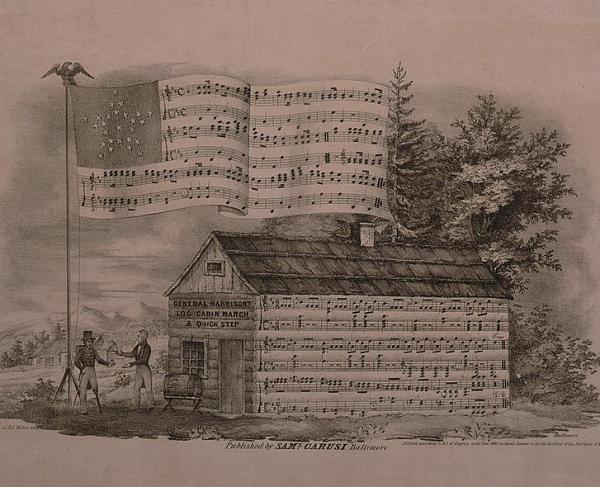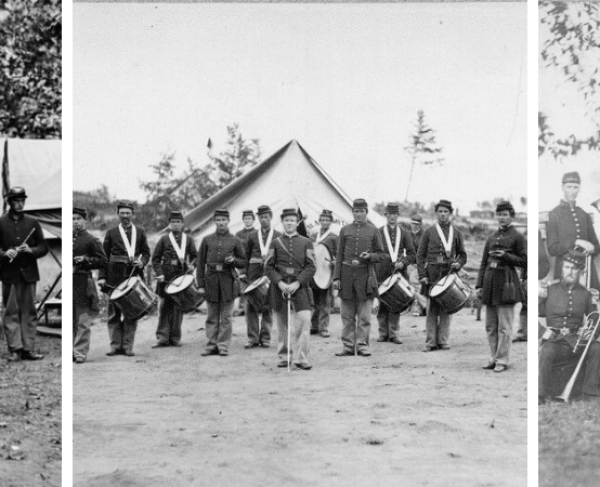Popular Musical Instruments of the 18th & 19th Centuries
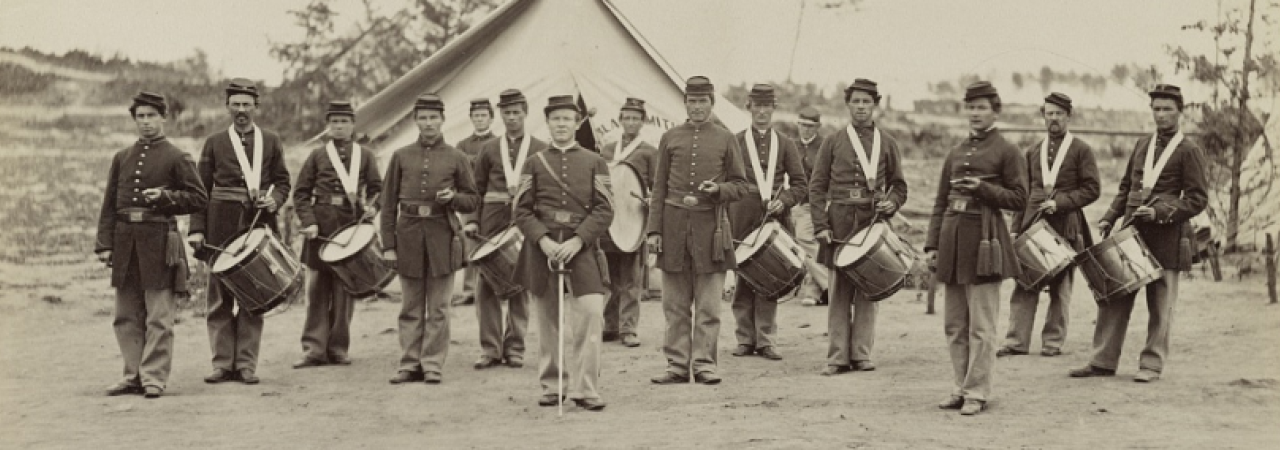
Since the end of the American Civil War, musical genres, instruments, and technologies have expanded immensely. The world saw a shift in musical periods that evolved from the Baroque to Classical, to the Romantic and finally into the twentieth-century. The electric guitar, saxophone, and turntable were decades away, and the ability to record music and disseminate it broadly across the globe was unheard of. It was innovation and technology that created these advancements. So too had musical advancements had taken place during the American Revolution, American Civil War, and the decades in between. Thus, over the course of the eighteenth and nineteenth centuries, an innovation that led to movements such as the Enlightenment and Industrial Revolution broadened the known instrument families and paved the way for new timbres and genres of music. But not all of the newly-invented instruments lasted throughout their respective centuries. What remained became popular instruments that we still play and hear today. Some of the oldest popular instruments that can still be seen on stage and in public schools rose to prominence during the eighteenth and nineteenth centuries.
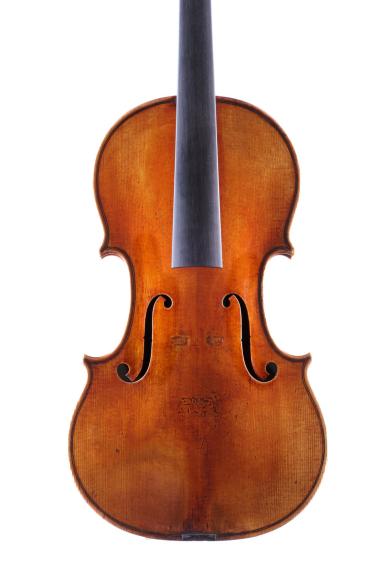
The string family has always played a dominant role in Western art music. String instruments comprised a large majority of instruments popular during the eighteenth and nineteenth centuries. Popular string instruments that were heard in concert halls and at home included, but were not limited to: violin, viola, cello, double bass, harpsichord, fortepiano, and guitar. String instruments during this time period were handmade, often ornate, and constructed of wood. Maple, Spruce, Ebony, Rosewood, and Willow were the most popular types of wood used for the construction of stringed instruments. The usage of various types of wood for different parts of each instrument allowed for the maker to produce an instrument with a smooth, mellow, and overall beautiful tone. The aforementioned instruments are all classified as string instruments, but within the string family there are three major categories: instruments that are plucked, instruments that are hammered, and instruments that are bowed. Each of these playing methods causes the string or strings to vibrate, thus producing a pitched sound. For example, a violin, viola, cello, and double bass are all primarily bowed instruments. A bowed instrument requires the performer to drag a bow across the strings which produces a sound. Guitars and harps are an example of plucked instruments. Performers who are plucking an instrument use their fingers to pluck the strings of a particular instrument to cause the string to vibrate and thus produce a sound. Harpsichords and fortepianos are categorized as hammered string instruments, as wooden hammers with felt heads “hammer” a string that is connected to a key that the player depresses. Although the harpsichord and fortepiano became obsolete with the arrival of the piano, the other instruments of the string family have remained since before the American Revolution through today. In fact, many string instruments from the eighteenth century command a high dollar and are sought after by the best performers for their irreplaceable sound, timbre, materials, and construction.
Although the string family saw little change in its use, construction, and timbres during this time period, the woodwind family did. Better materials and even the addition of keys increased the range, flexibility, and abilities of many of the instruments within the woodwind family. Instruments within the family that required reeds, such as the clarinet and oboe, quickly rose to popularity within orchestral and smaller ensemble settings. The reeds were necessary to create vibrations, which ultimately produced sound. The musician blows their air across the reed, causing it to vibrate and then subsequently presses or covers different keys to change the pitch. Each of the aforementioned instruments are made of wood and if the instrument had keys, those were constructed from nickel. While these reeded instruments were not common among every ensemble during this era, they provided support to stringed instruments by playing the melody. Also within the growing family of instruments were flutes, fifes, and piccolos. These instruments, although originally made of wood, during the latter half of the nineteenth-century, were produced mostly of nickel. Although timbrely not usually suitable for the orchestral setting, the popularity of fifes and piccolos for military music grew between the American Revolution and the American Civil War. The high pitch sound of the fife was able to carry over the sound of the loud drums and the footsteps of the troops marching in columns behind the musicians. This made it ideal for armies and officers to utilize the fife to aid in troop movement and to disseminate battle calls and commands during engagements. The use of the fife and piccolo within military units were just some of the instrument families that were utilized in camp, on the march, and during camp.

Percussion instruments are other well known instruments of Baroque and Classical eras. Originally, percussion instruments were designed to be played indoors in the small ensemble and orchestral settings. However, the use of percussion instruments became popular during the American Revolution and the American Civil War. Utilizing percussion instruments allowed for ease in the movement of troops, daily drill, and commands on and off of the fields. Field drums of the American Revolution and American Civil War are easily identifiable by certain characteristics. These characteristics include a wooden frame and top and bottom “heads” made of calfskin or sheepskin which were then stretched over the frame. To create tension and to assist with tuning, ropes were laced through holes drilled into the wooden frame. Additionally, four to six strands of catgut or rawhide were stretched across the bottom center of the drum head to create snares. Musicians used wooden sticks or beaters to play both the snare and bass drums. Drummer boys of the American Civil War have become one of the more iconic musicians from these two periods of music. And although Archibald Willard’s “The Spirit of ‘76” catapulted the drums and fife into the American imagination as the driving military music and instruments of the American military during the Revolution, it was another instrument family that drove those same sentiments during the American Civil War.
During the early half of the nineteenth-century, the world of music saw some radical and innovative changes to musical instruments, genres of music, and the emergence of musician’s new roles in military bands. Furthermore, many of the stylistic changes and new instruments developed during these two centuries and musical eras have remained till this day. Two such instruments in the brass family that drove change in numerous ensemble settings, textures and timbres, and instrumental innovation were the bugle and Saxhorn.
Joseph Halliday, a native Dubliner, is credited with introducing the keyed bugle in the early 1800’s, expanding upon the already popular keyed trumpet by adding lever operated keys to the side of the bugle. This addition to the instrument allowed the pitch of the instrument to be instantly and effortlessly changed simply by using the keys. Furthermore, the addition of keys allowed the traditional bugle to become a chromatic instrument. With front facing bells, the bugle is considered a directional instrument which usually plays the melody and driving lines of the pieces of music. The best way to think of these instruments is as a hybrid of a saxophone and a natural trumpet. Each instrument includes a number of keys (between five and nine) placed around the instrument and the pitch is raised or lowered by opening any combination of keys. The tone or sound is produced when the musician buzzes into the metal mouthpiece as with any other brass instrument. Another instrument that expanded the brass family during the nineteenth-century and contributed to the new genre of brass band music was the Saxhorn.
Invented and patented by Adolphe Sax in the late 1840s, the instrument was appropriately named after its inventor. Made of either brass or silver, these instruments are large, and were produced in a variety of sizes. They produced a soft and mellow tone and were known for the distinct direction of their bells. Saxhorns were similar to other brass instruments as they also used a three-valve system. The Saxhorn was not the only instrument that Adolphe added to the expanding instrument families during this time. Although the Saxhorn was widely used in military bands during the American Civil War, it did not have the staying power that his next invention did.
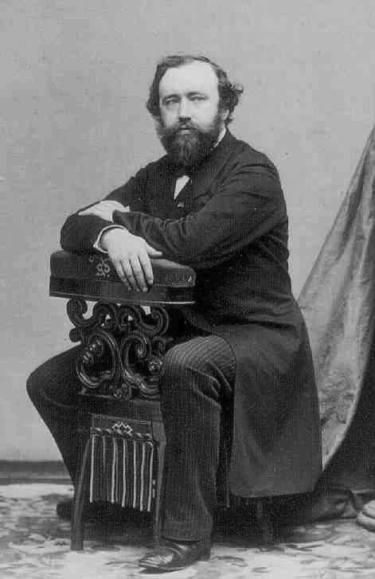
After Adolph Sax moved to Paris, he worked on another new instrument known as the saxophone. The saxophone, more commonly known as the sax, is made of brass but is categorized as a woodwind instrument because its sound is produced by the musician blowing across a reed. This new instrument was revolutionary and has since been widely used in classical music, military bands, marching bands, and later in jazz and contemporary music. The arrival of the saxophone to the musical landscape was concurrent with the shift of musical genres and their popularity during the nineteenth-century. One of the ensembles that rose to prominence were wind ensembles, or concert bands. Bands of the time usually consisted of a variety of reed, brass, and percussion instruments. These ensembles included, but were not limited to: flutes, clarinets, oboes, bassoons, trumpets, trombones, French horns, tubas, and a variety of percussion instruments. Their rise, however, was astonishing to some musical purists. The growing diversity between traditional orchestras and new and emerging genres such as wind ensembles, though, provided many opportunities for musicians to expand their skills, technique, and repertoire. The rise of new ensembles and genres of music, like concert bands, were only one of many changes in the American musical landscape between the American Revolution and Civil War. Another new genre of music and ensemble, although it had European roots, was American brass bands.
With the emergence of this ensemble and genre of music, there was also a change in the prevalent instrumentation of the day. Many of the reed instruments such as clarinets, oboes, saxophones, and bassoons were often eliminated and replaced with brass instruments. Brass instruments, by the very nature of their sound production, could overpower the lighter timbres of the woodwind family. Thus, with the removal of reeds from brass bands, a more pure brass sound was produced. This ensemble sound, then, became ideal for outdoor settings, including armies on the march and in the field. In 1857, a prominent musical journal of the 1850s reprinted a clipping from another periodical on the subject of reed versus brass instruments, the superiority of an all brass ensemble, and the necessity of leaving the reeds behind in this setting. The author, whose words appeared in Dwight's Journal of Music, noted:
The 39th [39th Regiment of the Champ de Mars] band is large, but it has some dozen men blowing their breath away on clarinets, bassoons and flutes, to but little purpose. In short, it is a great waste of wind. The band is modelled as our Boston bands were fifteen years ago. Take away the inefficient reeds and give them tubas instead, and this Crimean band would crash out a mighty march; but now it wants body, as an Englishman would say of his beer. The melody is one grand squeak, sounding like the sesquialtra [sic] of the organ, and about as well adapted for melody as that stop would be with a swell accompaniment. There is a brilliance to the American bands not yet attained by the English, if this is a fair specimen of their proficiency.
Between the close of the American Civil War in 1865 and today, the world of music has witnessed an immense change. So too could be said of the period between our fight for independence and the war that almost split our country in two. Musical genres, instruments, and technologies expanded immensely. The world saw a shift in musical periods that evolved from the Baroque to Classical, and the Romantic era. It was innovation and technology that allowed composers and musicians to experiment with timbres, instrumentation, and thus create a new musical landscape during this period. This period of musical expansion broadened the known instrument families. But not all of the newly-invented instruments, such as the Saxhorn, lasted throughout their respective centuries. What remained are popular instruments that we still play and hear today, seen on the orchestral stage and in public schools. They are instruments, timbres, and ensembles that will continue to inspire and gratify the ear well into the twenty-first century.
Further Reading
- Music of the Civil War Era By: Steven H. Cornelius
- Battle Hymns: The Power and Popularity of Music in the Civil War By: Christian McWhirter
- Songs of the Civil War By: Irwin Silber

